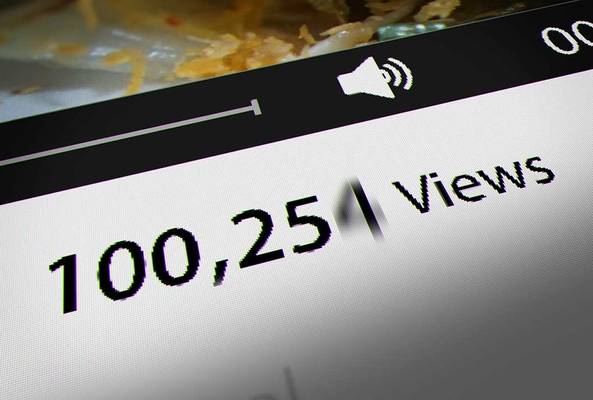Lydia Sweatt is a writer, bookworm, and bass guitar enthusiast. When she goes outside, a bicycle goes with her.
How to Find the Right Time to Publish on YouTube
On YouTube, finding the perfect publishing frequency isn’t always that easy. If you post too often, your subscribers won’t have the time or energy to watch your content. And if you post too sporadically, viewers may abandon your channel when videos are slow to appear.
The sweet spot is different for each creator, and you'll only discover it by uploading more content and learning as much as you can about your audience.
Posting more videos gives YouTube a chance to share some audience data with you, such as how many unique viewers you’re attracting each month. From there, you can determine how much content your audience is willing to consume, and thus, the best uploading frequency for your channel.
For more details, watch our latest video about finding that perfect number:
Whether you have years of experience or you’re just starting out, these powerful tips will help you upload the right amount of content to YouTube.
Can You Publish Too Much Content to YouTube?
Consistency is important on YouTube, but it only pays off when you have a reasonable uploading cadence. After all, your audience only has so much time in a day. YouTube understands this, and that’s why the platform will only send three video notifications to your subscribers every 24 hours. So for example, if you post five videos in a day, only three of them will reach the notification bar on subscribers' phones.
That’s why you should post a maximum of three videos every 24 hours.
Anything more may be pointless, especially if you want your video to be recommended across YouTube.
Here’s how that scenario works: In the first three to six hours of publishing a video, most of your views will come from subscribers clicking a notification. It’s the initial push that gets your video noticed, and the more clicks you get, the more Watch Time you’ll receive. Once YouTube realizes your video has a high view duration, the platform will share your content with more people.
If you plan to publish three videos daily, be sure to stagger them throughout the day - perhaps one for the morning, afternoon, and evening. Getting three notifications from the same channel at once is jarring, even for die-hard fans.
Can You Upload Too Little Content to YouTube?
On the other end of the spectrum, it’s possible to post way too sparingly on YouTube. Whether that can hurt your channel or not, the answer truly depends on the situation.
For example, an audience of 18 and younger may be more connected to the digital world. They're likely to be on YouTube and other social media platforms daily, and if you're a gaming channel, that’s ideal. Your audience could easily watch one of your videos every day, potentially more.
But on the flip side, what if your audience is busy mothers who work during the week? They may have only an hour or two on Sunday nights to watch your content. So in some way, your upload schedule has to align with your viewers’ lifestyle.
There's a good chance your viewing habits on YouTube, as a creator, are somewhat aligned with your target audience. Ask yourself these four questions to gain more insight:
- How often do you visit YouTube?
- How long do you watch video content?
- Are you a loyal subscriber who’s willing to wait for new content?
- Or, do you get restless when videos are released too slowly and look for a more consistent channel?
What were your answers? If you and your audience share the same interests, you probably consume content the same way and should adjust your posting schedule accordingly.
How to Find The Right Publishing Schedule For Your Audience
By now, you’ve probably gleaned that the best way to pinpoint your weekly upload number is to study your audience. Luckily, the YouTube Studio and its wealth of analytics contain everything you need to know, so here's a quick way to analyze your audience:
- In the YouTube Studio, go to the left navigation menu and click ‘Analytics’.
- On the main channel analytics page, go to the uppermost menu and click the ‘Audience’ tab.
- In the top right corner, change the time period to ‘Last 90 Days’. This gives the maximum amount of data for unique viewers and average views per visitor.
After doing all that, you should see a page that looks like this:

As you can see, the vidIQ YouTube channel got nearly 4 million views from unique visitors in the last 90 days (at time of writing). But overall, we got 7 million views total, which means the average viewer watched 1.7 videos on our channel. Of course, you want this number to be as high as possible, with each viewer watching all of your videos.
Also, unique viewers can be an indication of consistency. If you're posting all the time and giving your audience everything they want to watch, that number should rise. But if you're producing weird and wacky stuff your viewers didn’t sign up for, the unique viewer count will be lower.
When it comes to uploading frequency, your audience has the opportunity to watch all your videos if you post as often as they consume. However, if you're producing too much content for them to watch, your unique views may decline.
As your channel grows and you produce more content, it takes more effort to influence these analytics, as you saw from our fairly static graph. Nonetheless, you can do a test by slowly tweaking your frequency, adding one extra video each week (or removing one) to see if you get more or fewer views. The results should confirm whether your uploading frequency matches the viewing frequency of your audience.
Quality vs. Quantity on YouTube: Which Should You Focus On?
On YouTube, creators try to make videos of the highest quality. But there are times when quantity may be more beneficial, and that’s especially true at the start of your YouTube journey.
Uploading frequently helps you learn the YouTube process so you can eventually conquer it. After you've done 50-100 videos, you'll start to get an idea of what works best for you and your audience, and then you can go after the quality you’ve always wanted. But prior to that, let ‘eat, sleep, create’ be your mantra.
There are also time-sensitive opportunities where quality isn’t the biggest priority. When a popular trend or piece of news is fresh for the taking, you’ll want to post something about it on your channel before everyone else does. And, trust us - being ‘first’ on YouTube is a powerful thing.
Let's put it this way. If you're a tech channel posting every Monday and Friday, and the iPhone 12 is announced on a Tuesday, are you going to wait until Friday to post your thoughts about Apple’s latest phone? Hopefully not. By then, you might be too late.
Also, think about your capacity to create video content. You don’t want to post so many videos that you burn out and abandon your schedule altogether. Your audience will notice, and if they're used to a certain uploading frequency, they may lose interest in your channel.
Like many things on YouTube, your audience is the key to finding the right uploading frequency. Once you’ve learned all you can about your viewers, you can post just enough content to reel in more views.
Want To Learn More YouTube Tips and Tricks?
If you want to take your YouTube channel to the next level and get more views on YouTube then make sure to download vidIQ. Join over 1 million other users and use vidIQ to help you research YouTube, analyze videos, audit your own channel, and take actionable steps then click here to install now!
And if you’re really serious about growing your YouTube views and subscribers, sign up for exclusive access to the vidIQ Academy and learn how to launch a successful YouTube Channel in just 30 days.



